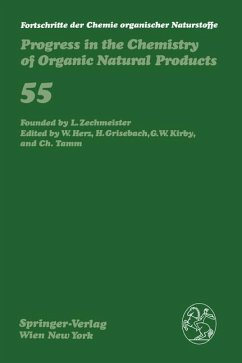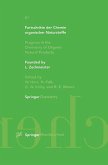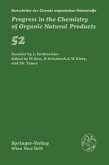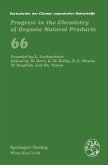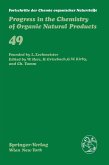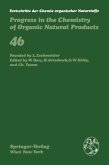Naturally Occurring 6-substituted 5,6-dihydro-?-pyrones.- 1. Introduction.- 2. Nomenclature and Classification.- 3. Distribution and Structure Determination.- 3.1. 6-Alkyl-5,6-dihydro-?-pyrones.- 3.2. 6-Alkenyl-5,6-dihydro-?-pyrones.- 3.3. 6-Aryl-5,6-dihydro-?-pyrones.- 4. Physical Methods of Structure Determination.- 4.1. 1H- and 13C-NMR Spectroscopy.- 4.2. Mass Spectrometry.- 4.3. Infrared and Ultraviolet Spectroscopy.- 4.4. Circular Dichroism.- 5. Biosynthesis.- 6. Biological Activity.- References.- Addendum.- Building Blocks for the Total Synthesis of Anthracyclinones.- I. Introduction.- II. General Synthetic Methods.- 1. Friedel-Crafts Reactions.- 2. Diels-Alder Reactions.- 3. Anionic Reactions.- 4. Transition Metal Mediated Reactions.- III. Synthesis of Building Blocks for Rings A and B.- IV. Construction of Ring A.- 1. Diels-Alder Reactions.- 2. Electrophilic Additions.- 3. Nucleophilic Additions.- V. Building Blocks for Rings C and D.- VI. Concluding Remarks.- References.- Indole Alkaloid Production in Catharanthus roseus Cell Suspension Cultures.- 1. Introduction.- 2. Discussion.- 2.1. Indole Alkaloids and Their Formation in the Plant and in Cell Cultures.- 2.2. General Methods of Catharanthus roseus Cell Suspension Culture Work.- 2.2.1. Analytical Methods.- 2.2.2. Development of High Yielding Cell Lines.- 2.2.3. Growth and Alkaloid Production in Catharanthus roseus Cell Suspension Cultures.- 2.2.4. Effects of Culture Conditions on Growth and Alkaloid Production..- 2.2.4.1. Medium Composition.- 2.2.4.2. Addition of Precursors.- 2.2.4.3. Light.- 2.2.4.4. Temperature.- 2.2.4.5. Gaseous Environment.- 2.2.5. One-stage Systems.- 2.2.6. Large-scale Fermentation.- 2.2.7. Immobilized Cell Systems.- 2.2.8. Cell Free Systems.- 3. Conclusions.- References.- Sucrose and Its Derivatives.- 1. Introduction.- 1.1. History.- 1.2. Structure.- 1.3. Nomenclature.- 1.4. Synthesis.- 1.5. Biosynthesis.- 1.6. Conformation.- 2. Protective and Functional Groups.- 2.1. Ethers.- 2.1.1. Tritylation.- 2.1.2. Methylation.- 2.1.3. Silylation.- 2.2. Cyclic Acetals.- 2.3. Esters.- 2.3.1. Carboxylates.- 2.3.1.1. Acetates.- 2.3.1.2. Benzoates.- 2.3.1.3. Benzoylpropionates.- 2.3.1.4. Pivalates.- 2.3.2. Sulphonates.- 2.3.3. Chlorosulphates.- 2.3.4. Other Esters.- 3. Derivatives.- 3.1. Anhydrides (Oxetanes) and Epoxides (Oxiranes).- 3.2. Halides.- 3.3. Unsaturated, Deoxy and Branched-Chain Compounds.- 3.4. Nitrogen-containing Compounds: Azides, Amines and Morpholines.- 3.5. Sulphur Derivatives.- 4. Enhancement of Sweetness: Structure Activity Relationships.- 5. Natural Products Containing Sucrose.- 5.1. ?-D-Fructofuranosyl Derivatives.- 5.2. ?-D-Glucopyranosyl Derivatives.- 5.3. ?-and ?-D-Galactopyranosyl Derivatives.- 5.4. Galloyl Derivatives.- 5.5 Agricinopine A.- 5.6. Sucrose Esters from Potato.- 5.7. Sucrose Esters from Tobacco.- Acknowledgment.- References.- Author Index.
Hinweis: Dieser Artikel kann nur an eine deutsche Lieferadresse ausgeliefert werden.
Hinweis: Dieser Artikel kann nur an eine deutsche Lieferadresse ausgeliefert werden.

